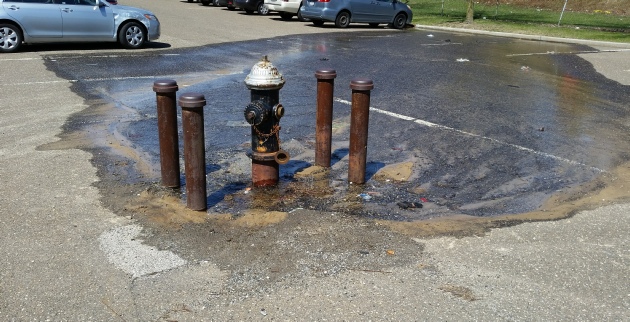


Copyright 2015, 2018, 2019, 2022 Solutions by Design


Department of Environmental Protection
Reporting problems with those portions of the NYC water supply system that are outside the city can be impossible.
The most immediate issue, is that there is no effective way for the public to report a problem with the portion of the NYC water supply system that is outside of the city. This came to my attention when I tried to report that the hydrant (installed as a vent valve) in the Village of Lawrence LIRR parking lot on Doughty Boulevard was open.
311 said that they don’t accept complaints about NYC infrastructure outside of the city! On that occasion I spoke to the shift supervisor on duty and placed an “agency complaint” against 311 and DEP. I got the water turned off by driving to the Far Rockaway fire house and they went out to turn off the water. Subsequently, I spoke to Sara Pecker at DEP. She advised me to call the local police (Nassau – 4th precinct) or the local water company (Long Island American Water – 516-
anything about the NYC water system, and that I should call NYC. Subsequent investigation did reveal that some of the local upstate police departments did have a NYC DEP emergency number.
I believe that this is unacceptable since NYC has spent quite a bit of money saying that 311 is the number to call for anything New York City. What would happen if the water main under 878 were to fail? Would DEP learn of it on the TV news? See the photo below.
Earthquake preparedness is non-
The other issue that I raised is DEP earthquake preparedness. Earthquakes are fairly common in the Hudson River Valley through which the aqueducts and water tunnels pass. Of course, major earthquakes are rare – but there is no guarantee that a large enough one to damage an aqueduct or water tunnel will not occur. If that were to happen, a significant fraction of the water supply could be lost in a short time. I believe that it is critical that DEP evaluate the matter and develop resiliency procedures. It seems to me that where an aqueduct or water tunnel crosses a geological fault, there should be shut off mechanisms on both sides of the fault far enough back from it that they would not be damaged. There should be two sets of valves on each side. A valve furthest away from the fault should be a normal, electrically operated valve that could be operated from a DEP control center or from a local controller if it sensed an earthquake or significant pressure drop across the fault. Of course it must be provided with back up power that would be operable in the event of an earthquake (i.e., a natural gas generator would not be reliable without an onsite storage reservoir). A second, catastrophic failure valve should follow the normal valve. This valve should be a gate type valve held open by a mechanism that could be quickly removed by explosive bolts (as used by the space shuttles) in the event that the first valve failed to operate. I believe that the cost of implementing these modifications to the water supply system would be small (under a billion dollars) compared to the cost of a failure in the system. Certainly it would be impossible to truck in a billion gallons of water per day to the city.
